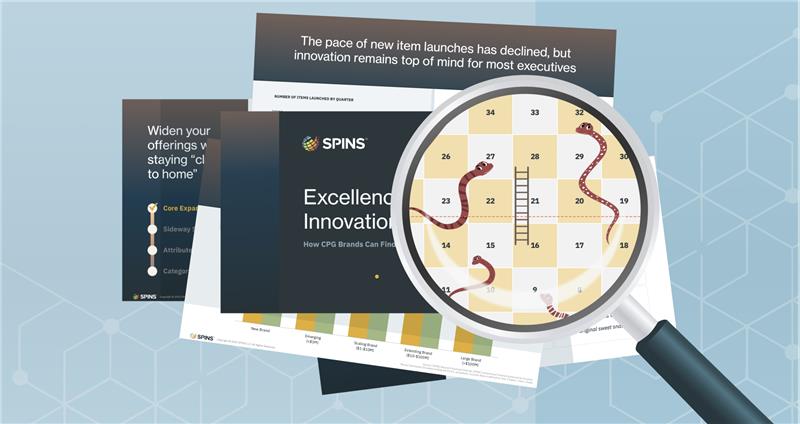Use Omnichannel Data to Strengthen Your Sell Story
SPINS has longstanding relationships with brands and retailers, and over the years two goals have remained constant:
- Brands want to know how they can get their products on store shelves
- Retailers want brand teams to know the ins and outs of their data at pitch meetings
As it turns out, solving the latter will lead to the former. The most effective way to convince a retailer to stock your products is to walk into a meeting with data that proves you understand the complete market, your customers, and the retailer’s needs—both in stores and online. In this competitive product landscape, quantifiable proof will always be more convincing than asking a retailer to take a risk based on a hunch.
Here are 4 must-have metrics that create an effective retail pitch:
1. What is driving category growth in each channel?
Retailers want to know that your audience is also their audience, and the best way to prove that is by showing what shoppers in your category are after. Look at the channel where your product is sold (or will be sold upon launch) and identify which products are driving growth. Start with a holistic view into the market that reveals how you perform by region and each channel. If your product is already showing growth momentum or is resonating strongly with natural and organic shoppers—whether online or in storefronts—let retailers see those figures.
SPINS Omni-Intelligence provides you the most comprehensive view of competitive markets and channel performance so you can establish your expertise and provide context to your pitch. Prove to retailers that you understand the full breadth of market channels in physical and digital locations, whether that’s in the natural channel or on Amazon.
2. How does your product perform compared to the overall category?
Raw numbers only tell a small part of the story. Build on the strength of your category growth data by adding figures for distribution and velocity. If your product is already on the market, break down where your product is sold online and offline, how many units your product is moving and at what velocity. How does this compare to category performance on Amazon. It offers a snapshot of where you currently sit in the category.
SPINS provides store level data that digs into the performance data of a retailer’s specific location—key information that helps you understand their sales landscape, speak to specifics about their business, and form a case for why their audience is ready for your products.
3. How are you performing versus competition within the category?
Now that you’ve shown how well you’re moving units and where your product is distributed, you want to show your competitive edge. Use the same metrics (velocity and unit) to place your products next to your competitors, emphasizing the ways you’re either outperforming them or gaining ground. Before you walk into your pitch, you can study these competitive insights to see who you’re up against and prove that you’ve built your business strategy on marketplace data.
4. How is your product aligned with attributes that have growth potential?
This metric might be the most important to a retailer because it brings together all of your data and puts the spotlight on your product’s strengths.
Shoppers are drawn to certain product attributes, such as being gluten free or vegan or wanting to avoid artificial colors. Attributes are a critical part of the consumer’s purchasing process, and you need to be able to explain to retailers how your product plays into that decision making. For example, if plant-based is a growing market and your ingredients list is proudly 100% vegan, you can draw a line between what you’re offering and what customers are already looking for.
- Are you prepared to occupy the market’s whitespace? Attributes don’t just tell you about today’s trends; they also show you an opportunity. If your product has attributes that few others have, you have a point of differentiation that places you in an undeserved category. Tomorrow’s trends often begin with brands that identify a space they can own to attract customers.
- Are you on top of fast-growing trends? When you’re reviewing your category performance, you might notice a fast-growing trend around a unique ingredient that is on the cusp of becoming tomorrow’s hottest item.
SPINS Product Intelligence provides that attribute-level view—whether you’re looking at ingredients, allergens, forms, or nutrition information. With this data, you can draw a line from your products to today’s trends to this retailer’s interests.
Put Omnichannel at the Heart of Your Retail Pitch
Your path to growth begins with strong relationships with your retailers. A data-based pitch that shows your deep knowledge of your category and the retailer’s needs. With SPINS Omni-Intelligence you can understand what is happening across channels in brick-and-mortar and on Amazon while adding insights from the attributes driving growth.







